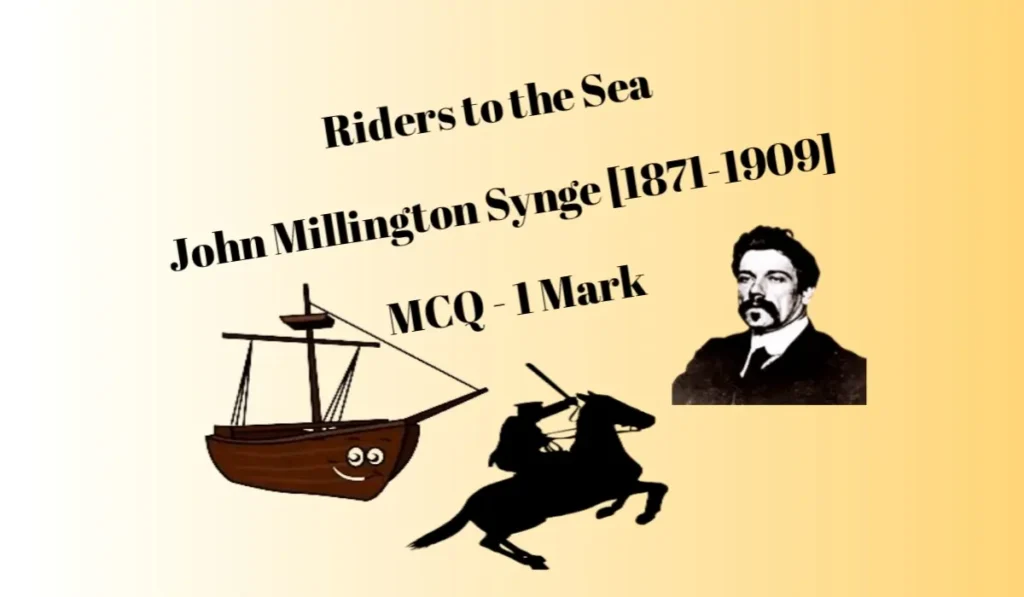Question : Essay-type
Bring out the general traits of Shakespearean tragedy.
Introduction
Shakespeare has four tragedies which are much of a piece. We call them four great tragedies– Hamlet, Othello, King Lear and Macbeth. It is possible to deduce from a study of these plays, what may be called Shakespeare’s conception of tragedy.
Bradley’s View of Shakespearean Tragedy
Following Bradley’s lead we may define Shakespearean tragedy as a study of the suffering and death of a big or great man– of exceptional suffering, ending in the death of a very king among men. The man has many virtues, but he has one flaw, one weakness which for him proves fatal, and in connection with his peculiar circumstances brings about his doom. It is the story pre-eminently of one man, whose suffering is exceptional. Hamlet is the prince of Denmark and King Lear is a king. Othello is the great general of Venice. It is suggested that the fall of a prince or a general is a national calamity as it affects the fortune of a whole nation.
The Hero in Shakespearean Tragedy
The hero of a tragedy in Shakespeare is not only a person of high degree, but also an exceptional man. They have each their Achilles’ heel. Lear’s tragedy is the tragedy of dotage and short-sightedness, Othello’s that of credulity, Hamlet’s that of indecision, and Macbeth’s that of ambition. In most cases their defect is not a defect at all. It is the reverse side of a merit. In any case, the defect comes to be a defect only in the circumstances in which they are placed. Hamlet is slow to act, given to too much brooding, too fine a soul to remain untouched by the grossness of things around. The result is that he is moody. This is no longer a fault in any man. But Hamlet drags himself to tragedy. His defects come to be a defect in his circumstances. Dilatoriness would not be fatal for Othello and credulity would not affect Hamlet. Othello meets with his tragedy because of his precipitancy, and Hamlet meets with his doom because of his procrastination.
The hero in Shakespeare contributes to his tragedy, but he alone is not responsible for it. The tragedy is the joint product of character and circumstances. To say character is destiny, in Shakespeare, is to say a half truth. Besides, chance and accident plays its part in bringing about the tragedy. It is an accident that Desdimona drops her handkerchief at the most fatal of moment. But for his accidents Yagoo’s plot would have failed. Duncan visits Macbeth’s castle at a fatal hour. Edgar in King Lear arrives just a moment too late to save of Cordelia’s life.
The heroes of Shakespeare find themselves confronted with a most impossible situation. We find in them an inner conflict which is a distinctive feature of Shakespearean tragedy. In addition to the external conflict between two individuals or groups, there is in Shakespeare the spectacle of the soul is divided against itself. In the case of Othello, there is a strike within. Macbeth considers the pros and cons of the contemplated murder and inclines in favour of the abandoning the idea. He shrinks. His wife eggs him on. There is a hovering. Finally, Macbeth is driven by an irresistible impulse towards the crime.
Pity and Fear in Shakespearean Tragedy
Apart from the catharsis of pity and fear, Shakespearean tragedy leaves an important impression on the mind. Bradley says that the central feeling is the impression of waste. With Shakespeare the pity and terror seem to unite with a profound sense of sadness and mystery which is due to the impression of waste in representing the failure of man. Shakespeare makes us vividly conscious of his glory. That is why Shakespearean tragedy is never depressing in his effort. When we think of Hamlet, Macbeth, King Lear and Othello, we wonder at their vast possibilities. We discover– “What a piece of work is man!”





